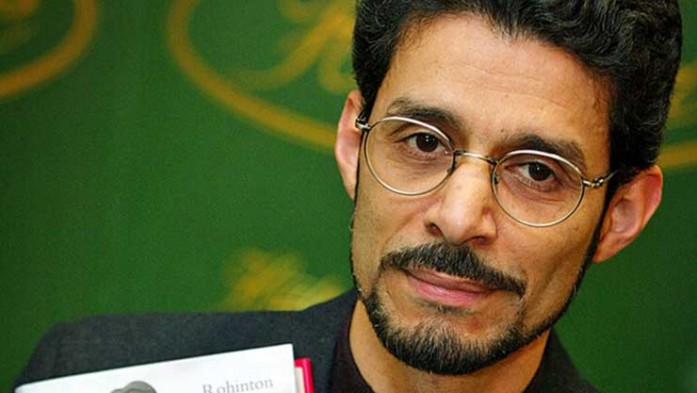I think that Rohinton Mistry‘s “A Fine Balance” is a book that can’t be avoided if you want to read Indian fiction. It is extraordinary well written, it is present in any Top Books list about India, or just Bombay (even if I have recently found one by the British Guardian that listed “Family Matters” on an alleged Top 10 about Bombay, Mistry’s 2002 third book). I have my own preferences about books on India, or on Bombay-Mumbai, but I haven’t yet read all of the acclaimed books.
What can I say is that this one is very long and very depressing. When I was very young, my parents took me to black and white Indian drama movies, where it was absolutely unavoidable for the whole theater to start crying at a moment when something unbelievably cruel happened. And then they sung. This novel is almost exactly the same. When you think that finally, a problem or a task has been solved, something terrible happens. Some things can be expected, we’re not dealing with Batman type characters, or with the new Bollywood depiction of the Indian hero, Aamir Khan style, with a sense of humor, extremely intelligent and why not, even strong, “Jackie Chan” strong, if you know what I mean, but most of what’s happening is just crushing your senses.

Rohinton Mistry
[source]
No, my friends, this book is more violent in its core than anyone can imagine. I have recently watched Gangs of Wasseypur, an Indian movie set somewhere in Bihar. I don’t know where from exactly came the two tailors (Om and Ishvar, two of the four main characters) in “A Fine Balance”, but “Wasseypur” is such a terrible place. Unlike “Shantaram” (no matter what some literature purists say, is flawless, is like a screenplay, biographical or not, it remains a great story), an ode to Bombay, which is after all a great city with all its dirtiness and misery, this one is just set in an unnamed Bombay, during one of the darkest periods in modern Indian history, the “Emergency”.
The “Emergency” was a 21-month period in 1975–77 when Prime Minister Indira Gandhi unilaterally had a state of martial law declared across the country, based on her insecurities on keeping the power as long as possible. By claims about threats to national security (the war with Pakistan just ended), prime minister was offered the authority to rule by decree, allowing elections to be suspended and civil liberties to be curbed. For much of the Emergency, most of Gandhi’s political opponents were imprisoned and the press was censored. “There is an imminent danger to the security of India being threatened by internal disturbances”.
The book offers almost everything, very naturally, Indira Gandhi is named simple “Prime Minister”. Unlike her portrayal in “Midnight’s Children”, the Prime Minister is not crucified, but she appeared much monstrous than she was. What she did, what she orchestrated, was monstrous… I can talk more than necessary about that, about politics and the historical period, but it is better if you read the book. It won’t be easy. It is and at the same time it is not a page turner. You wait in awe of what can happen next. It’s a matter of taste, a sour one, of course. It was chosen by Oprah for her reading club, the one of the only two books written by Canadians (the other one being “Fall on Your Knees” by Ann-Marie MacDonald, another matter of taste, because the first “Canadian” who came in my mind beside Mistry was Mordecai Richler) who benefit by the “Oprah Effect” selling hundred of thousand of copies after being “chosen”.

A Fine Balance – cover
[source]
The book cover is actually a picture from 1992, made by an Italian photojournalist named Dario Mitidieri, who spent a year photographing street children in Bombay. This one is Savita, a two and a half years girl, performing for Arab tourists in front of the Taj Mahal Hotel. The collection is called “The Children of Bombay”. Other pictures from the series reminded me of Salaam Bombay!, Mira Nair’s movie from 1982.
“Sometimes you have to use your failures as stepping-stones to success. You have to maintain a fine balance between hope and despair.” These are a character’s words somewhere in the first quarter of this very long book, hence the title, which is not preparing you at all for what will come in the book. Be prepared to be stabbed on your soul, many times and again, with short periods of contemplating your wounds, and licking them through recovery, and when you are most hoping for the best, you are stabbed again.
“Loss is essential. Loss is part and parcel of this necessary calamity called life”. Whatever it was said about this book’s beauty, despite that the life goes on and the poor seems often to be more humanly compassionate than anyone else with a higher education, I found it excruciatingly painful to read, with no fine balance between good and evil.
If you liked what you read (and for that I humbly thank you for your patience), subscribe to this blog by Email! Follow this blog on Twitter, and on Facebook! For a joyous day, check out my pins on Pinterest or my grams on Instagram 😄. I hope you like this blog so much that you think it’s time to take a step further by becoming yourself a blogger; in order to do that have the kindness to read the Own Your Website offer I have prepared for you! You won’t regret. Thanks for passing by 😄 Speak your mind, don’t be shy!

[…] Muslims, you are a terrorist, or worse, an ISIS member, if not a leader. It’s the same reason Rohinton Mistry said that he will never visit United States again. He sports a beard, but he is not even a Muslim, […]